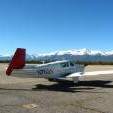tips for reinstalling fuel selector without spilling avgas everywhere
-
Members Online
- TCC
- Rsmithref
- Jamesp
- dkkim73
- Robm
- Jarerh
- Niko182
- Rick Junkin
- PT20J
- thomas1142
- 1980Mooney
- Mooney in Oz
- Guillaume
- Souhail
- Old Chub
- Ayrton
- Bondo
- chrisburdzy98
- Skyland
- Raistlin
- Fly Boomer
- Flyler
- gwav8or
- Ron McBride
- bluehighwayflyer
- MB65E
- kortopates
- PeteMc
- Fix
- mmcdaniel33
- BrettD
- Thedude
- Hamburglar
- 47U
- amillet
- Schllc


Recommended Posts
Join the conversation
You can post now and register later. If you have an account, sign in now to post with your account.